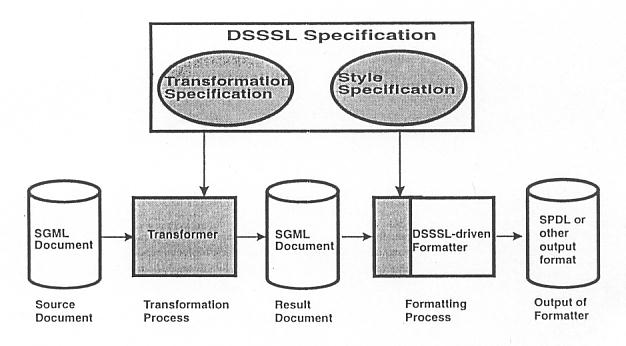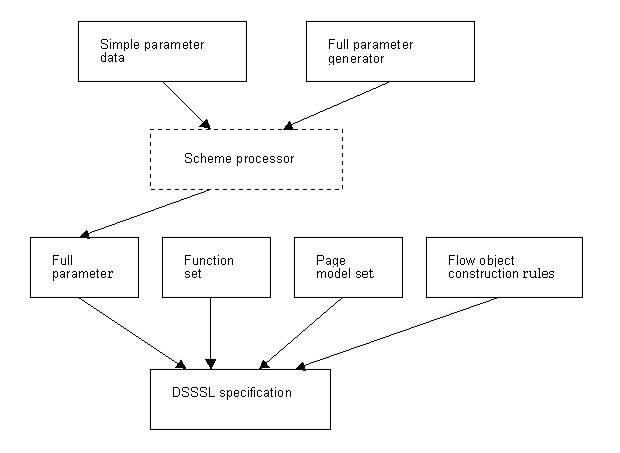
Panasonic/MGCS, Shimomeguro, Tokyo Japan
email: komachi@y-adagio.com
2001-11-07
Standardization activities on Coded characters have almost been done by the activities of
What shall we do next regarding characters and their related issues?
When several coded characters are assembled and aligned, they configure a sentence, paragraph, clause, etc., in accordance with their semantics. Those sets of coded characters (sometime referred to as logical elements) configure an electronic document.
The assembles of coded characters are rendered and presented with particular presentation styles, for feasible understanding of their semantics.
Here I wish to emphasize the importance of presentation styles of character strings in electronic documents presentation, since they have their own meanings and have to be preserved when interchanging the electronic documents.
Presentation styles had been developed in the conventional printing and typography technology, being based on cultural background of each country, each territory, each publishing/newspaper company.
Therefore when we study presentation styles, we have to be serious about the cultural background as we had been in our character study.
When we study presentation styles, we face to the problem that there are few authorized or published references on presentation styles of each country, each territory, each publishing/newspaper company. The only authorized references could be Oxford rule and Chicago rule for conventional Western documents.
Besides, we should study presentation styles for web documents, where appropriate presentation styles have not yet established.
Before we discuss presentation styles, we should review the structure of electronic documents, where the presentation styles are dealt with.
Today we have a number of forms of electronic documents, e.g.,
(1) Work Type 1
----------- ------------ |Creation |------------------->| Reviewed | ----------- ------------
(2) Work Type 2
----------- ----------- |Creation |------------------->|Processed| ----------- -----------
(3) Work Type 3
----------- ------------------------ |Creation |------------------->|Processed and Reviewed| ----------- ------------------------
(1) Work Type 1
(2) Work Type 2
(3) Work Type 3
NOTE: HTML is an instance of SGML (XHTML is an instance of XML). A style specification has been defined for each element in the HTML. Therefore simple-structured XML documents are sometimes converted into HTML documents for presentation, by using XSLT.
Here we focus on electronic documents of work type 3
and discuss about presentation style specifications for the documents.
Major parts of documents consist of character strings, which are assembled into elements, e.g., title, clause, paragraph, etc., according to the semantics of the included character strings. The semantics and element structures are usually based on the intention of the document author.
For example, a simple document consists of the following elements
-- title --
-- author --
-- abstract --
-- heading of clause 1 --
---contents of clause 1 --------------------
| -- paragraph 1 -- |
| -- paragraph 2 -- |
--------------------------------------------
-- heading of clause 2 --
---contents of clause 2 --------------------
| -- paragraph 1 -- |
| -- paragraph 2 -- |
--------------------------------------------
Logical structures of documents are described by existing markup languages, e.g., SGML(Standard Generalized Markup Language), XML(Extensible Markup Language), where element structures are specified by DTD(Document Type Definition) and actual document instances are marked up by tagging with the element types defined in the DTD.
HTML(HyperText Markup Language) is an instance of SGML with a fixed DTD. Therefore, HTML can be used to describe logical structures of a simple document.
Examples:
applies style properties to logical elements.
(1) Identify a logical element in a node tree of an SGML/XML document.
(2) Specify style properties to the element.
(0) Sometimes before the step (1), the node tree is converted for appropriate rendering.
| Language | step(0) | step(1) | step(2) | Note |
|---|---|---|---|---|
| DSSSL1) | Y | Y | Y | for SGML/XML documents |
| XSL2) | N | Y | Y | for XML documents |
| XSLT3) | Y | N | N | for XML documents |
| CSS4) | N | Y | Y | simple styles for web documents |

Style sheet is a set of rules.
A rule is described in the form of
Selector {property: value}
where
Selector identifies a element.
{Declaration} specifies properties to the element.
For grouping,
each selector is separated by ","
each declaration is separated by ";"
Implementation
(1) linking style sheet
(2) embedding style sheet
(3) inline style sheet
body{
color: black;
font-family: helvetica, sans-serif;
background: white;
margin: 2em
}
h3 {
margin-left: 1em;
font-size: 95%
}
h4 {
text-align: center;
font-style: italic
}
p {
background: yellow
}
Description Languages for logical structures and style specifications have been internationally approved and actually implemented.
Is the status enough for everybody to describe presentation styles for his own documents?
No.
As shown in 1.2, there is no enough references on presentation styles.
We should try to draft some reference documents on presentation styles considering the cultural background of our countries and our document environments.
The style specifications are too complicated to be described by everybody. (The example of 3.4 is an extremely simple one.)
One solution could be a library of style specifications.
I will show a trial carried out in Japan, which is JIS/TR X 0010: DSSSL library for complex compositions. Its English version has been submitted to JTC1 as DTR (Draft Technical Report)
This Technical Report provides a DSSSL library that can specify styles for the documents described by SGML or XML. The library makes it feasible to describe DSSSL specification for those documents, without any particular knowledge of DSSSL or particular composition rules.
NOTE: When we started to develop the TR, any draft of XSL had not yet published. The CSS cannot satisfy user requirements for the TR.
are shown according to the ISO/IEC directives.
Major and comparatively complicated formatting objects and formatting properties (i.e. presentation style) employed in usual publication (or usual Japanese publiaction) are clarified and defined.
They are:
The DSSSL library makes it feasible to describe DSSSL specifications required for complicated compositions.
Configuration of the DSSSL library is shown in [clause 5], and contents of the library files are listed in:
The configuration and processing flow of DSSSL library is shown in the following figure. In order to use the DSSSL library, Scheme processor and DSSSL processor have to be available.

The simple parameter data are provided in a form of association list for the full parameter generator. The simple parameter data are default values for a typical composition style. If necessary, some parameter data can be added to the simple parameter data.
Full parameter generator creates, on a Scheme processor, full parameters being based on the simple parameter data.
The function set includes DSSSL flow object generating functions and their support functions used in the construction rules in DSSSL specifications. The full parameters are referred to by those functions.
The page models are DSSSL descriptions of page styles. The full parameters are referred to by those page models.
The construction rules provide actual DSSSL specifications for a specific DTD, using the full parameters, function set and page model set.
The scope [major and comparatively complicated formatting objects and formatting properties (i.e. presentation style) employed in usual publication (or usual Japanese publication)] of the TR cannot cover all the presentation styles.
For example, it does not support the presentation styles for
After the PR and CR of XSL were published, a number of their implementations or implementation plans were announced.
Responding to those web technology, XSL and XSLT Libraries will be required.
As a conclusion, here I propose several new work items for the topic of presentation styles required for multilingual electronic document interchange preserving styles.
The final target could be to draft and submit an ISO/IEC DTR entitled with "Style Specification Library for Multilingual Compositions"